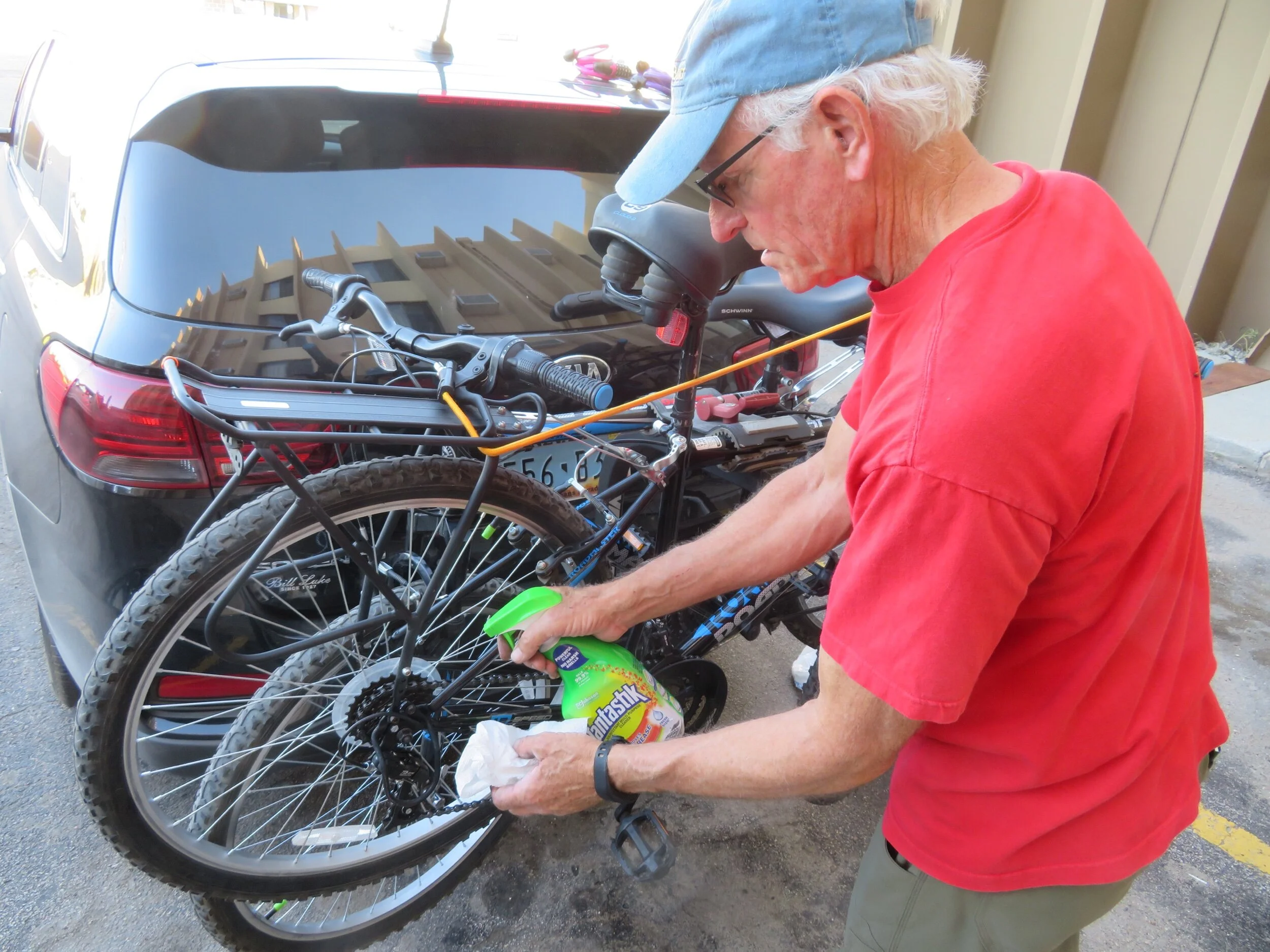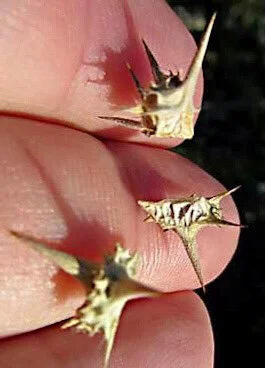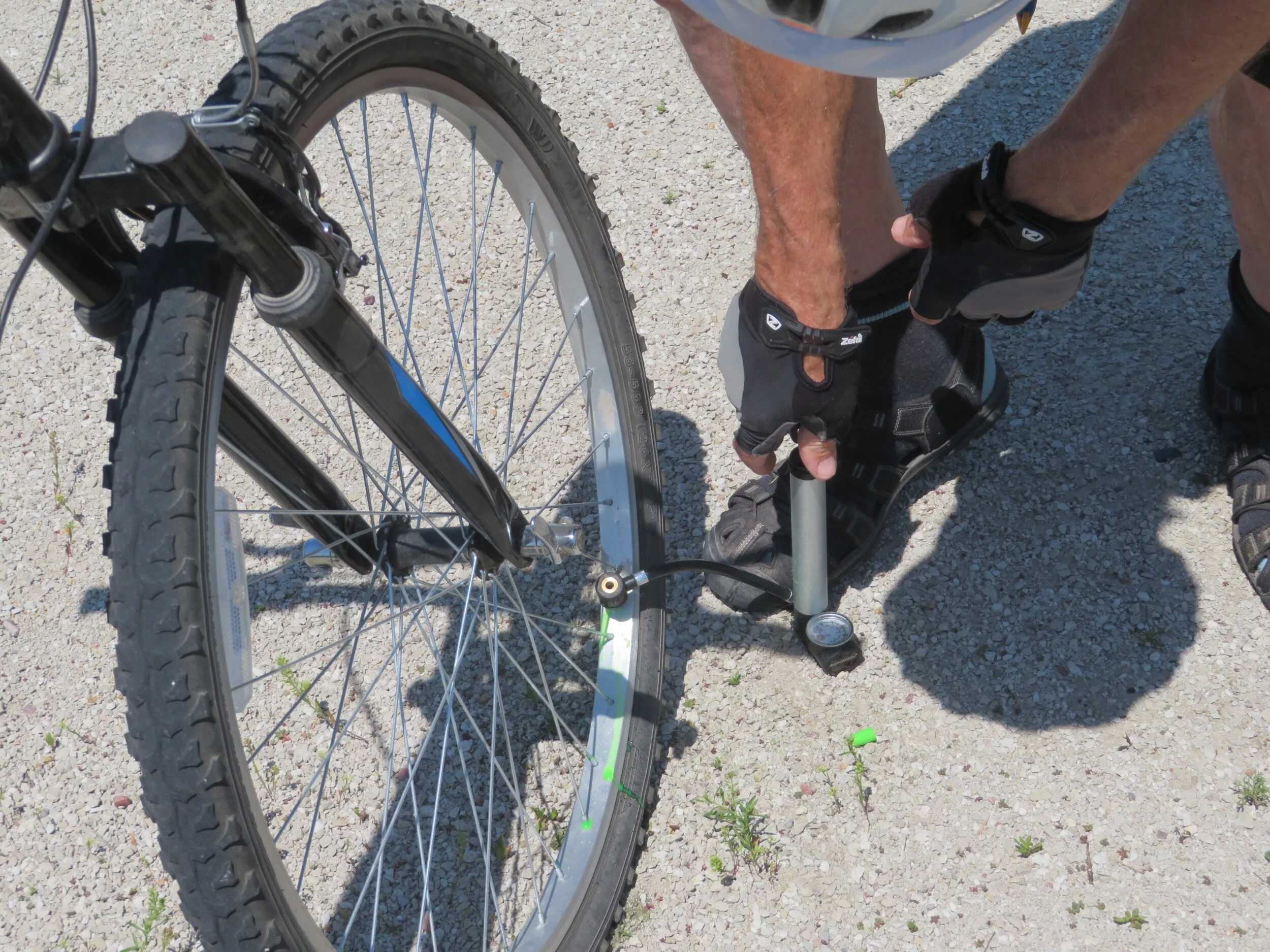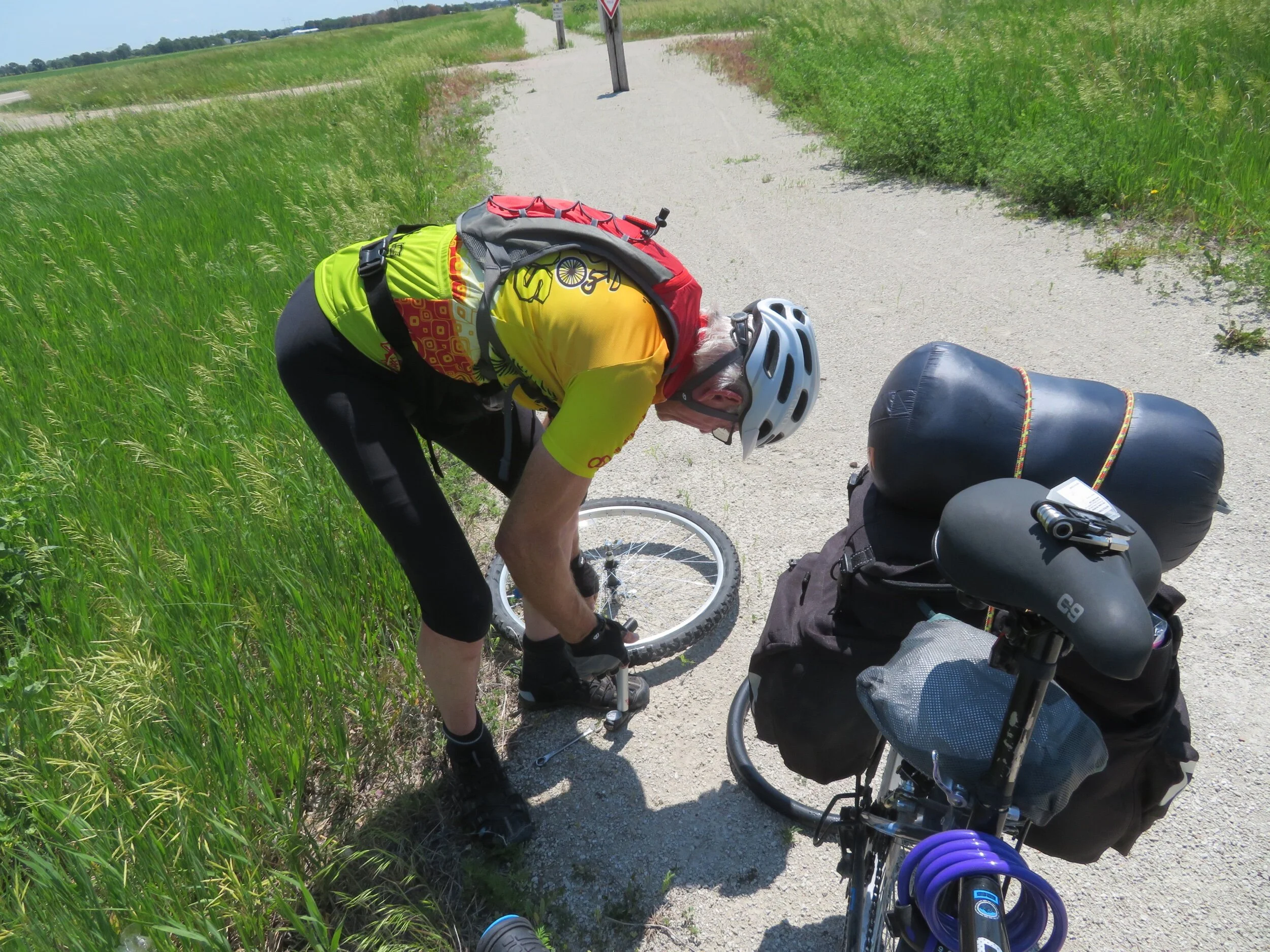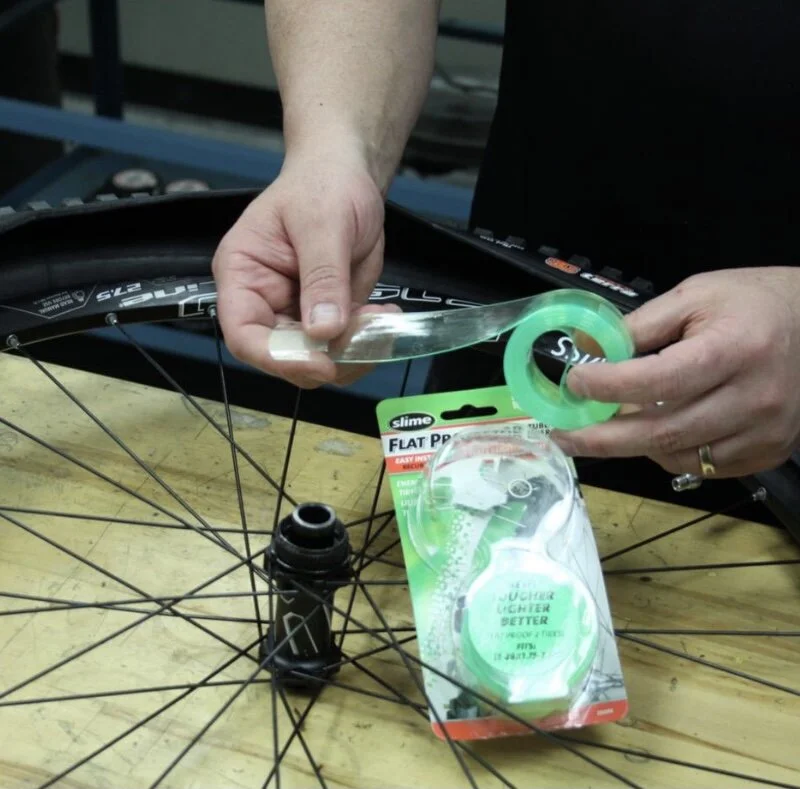Blue View - Keeping the Air in the Tires
/The Cowboy Trail through Nebraska will be the longest trek we’ve done on our bikes. Officially, it’s 188 miles, but we’ll have pedaled well over 200 miles by the time we’re done, counting the added distance for all the detours enroute.
One of my concerns, beyond whether we’d actually be able to pedal that far, was whether our $89 Walmart Roadmasters would hold up. The panniers were heavily loaded with our biking togs, a couple changes of clothes, hats, tent, sleeping bags, granny pads and other camping gear, rain gear, food, sunscreen, tools, spares, iPads, chargers, a charging brick, hand sanitizer, and a couple of masks for good measure. Add to that several liters of water each day, and the bikes were carrying a lot of weight. So, on the night before hitting the trail, I removed them from the carrier on the back of our Kia, and gave them some last minute attention... all that dust, dirt and vibration during the trip from Las Vegas hadn’t done them any good. I cleaned them both, then cleaned and lubed the chain and derailleurs and adjusted the brakes and shifters. When I was done, both were in as good a shape as I could get them. As it turned out, however, the real problem wouldn’t be mechanical; it would be keeping air in the the tires.
I had read that this trail was home to a rather nasty thorn called the goathead thorn. Several threads on the forums I read (yup, there’s at least two forums on riding the Cowboy Trail), indicated that they were a particular problem. Thorns were also a problem for us on our rides in the desert areas near Las Vegas, and I’m a big fan of Slime, that thick, green, viscous liquid Marcie talked about in a recent blog. It is squirted inside the tube via the valve stem, and is almost magical in how fast it works in stopping a leak. In our pre-Slime days, we couldn’t ride an hour without getting a flat... after adding Slime to the tubes, we went more than a year with no flats. I felt that our Slimed tubes would be up to the task, but just to be safe, I brought two pre-Slimed spare tubes and lots of patches.
Goathead Thorns
Inserting Slime into A tube
The Slime performed flawlessly... initially. Typically, when a thorn was removed, we’d hear the dreaded “hissss” sound, but it would quickly stop as a little green Slime appeared around the hole. I had no idea, however, about the vast number of those pesky thorns we’d pick up. On some days, we must have pulled thirty or forty thorns from our tires. The Slime did its job for the first few days. Each morning I’d add a little air to the tires, but other than that, we had no problems. After a few days, though, I had to pump up the tires more and more often - it was clear that the tubes were running out of Slime.
Seems Like i spent hours pumping up tires
When one of Marcie’s tubes would no longer “self-heal”, I replaced it with a spare. When another required air every couple of miles, I replaced it with the last spare. I noticed that the inside of the tires were dripping with Slime... too bad I couldn’t collect it and somehow put it back into the tubes! Towards the end of the trek, I was spending time each evening patching the best of the tubes for use as spares the next day, but then I started running low on patches. Would we make it to Valentine, the only town along the route with a store that sold bike supplies, or would we end up walking the last of the trail?
Tire repairs were getting To be Tedious
On our ninth day, the day we would, hopefully, arrive in Valentine, we had three flats. Two of the flats were fixed with our last two patches. The third flat happened four blocks from our hotel for the evening, and we were able to walk our bikes the rest of the way. I’d say that was pretty good planning. Well, okay, maybe I should have brought one more patch.
We parked our bikes at the hotel, walked over to the True Value Hardware and bought four new pre-Slimed tubes and more patches. They also carried another product made by the Slime company called Tube Protector Liners. These are long, flexible plastic strips that are inserted between the tire and the tube that keep sharp things from penetrating through and puncturing the tubes. I bought four of these as well. Finally, the store also had rim liners in our tire size. These are rubber strips that line the inside of the rim to protect the tube from chafing on the heads of the spokes. Apparently, the existing liners were wearing through... we had a couple of flats due to chafe on the rim side of the tubes.
Slime tube protector liner
It took a couple of hours that evening to install the new tubes, liners and tube protectors in all four tires, but when it was done, I was fairly confident we’d be able to finish the last remaining miles with fully inflated tires.
Want to know the real upside to our tire saga? My triceps, due to all my hours on the tire pump, haven’t looked this good in decades.


